TAKEAWAY: The impact of photos of the Haitian earthquake on selected front pages PLUS: More on tablets and how they may be here sooner than we thought
All about those tablets

Is this what the Apple tablet would look like? (Gizmodo)
My first encounter with the concept of reading a newspaper on a tablet was in 1999 at the American Press Institute’s J. Montgomery Curtis Memorial Seminar, “Newspaper Design: 2020,” in which Roger Fidler showed the newspaper of the future published in a tablet. Roger is without a doubt one of the pioneers on the subject, having first conceived digital publications and portable electronic reading devices in 1981. He is currently Program Director for Digital Publishing at the Donald W. Reynolds Journalism Institute, University of Missouri, where he continues to experiment with such devices.
Several of us had been invited to come to API with our version of what we thought the newspaper of 2020 would be like. It is obvious that we may be 10 years ahead of the target with newspapers that will appear on some type of tablet.
For months now, rumors have appeared in blogs everywhere about the possibility of a tablet-like gadget that would allow users to read newspapers and magazines on the screen of what may be anywhere between 7 and 10 inches wide. To add to the interest, rumors have always linked the Apple brand name to tablets, some calling it the ISlate, although I think that the iTablet might be a catchier term.
Now we wait for the announcement, perhaps at the end of this month, when Apple may show its tablet to the world.
If you would like to gaze into what a 10-inch Apple tablet would look like, go here:
http://bits.blogs.nytimes.com/2009/12/28/what-would-a-10-inch-islate-look-like/
Will it come in just in time, as a sort of late Christmas present, to provide our industry with a much needed boost? Who will be the first to adopt it and publish in it?
Regardless, one good thing is already happening: discussion of the tablet or something similar in almost every media house in the world.
For a for a fun read, try Matt Buchanan of Gizmodo , who recently pulled together an “Exhaustive Guide to Apple Tablet Rumors,” leaving no slate unturned:
http://gizmodo.com/5434566/the-exhaustive-guide-to-apple-tablet-rumors
Preparing for the tablet
I believe that when the tablet appears, it will force those newspaper companies adapting it, to take a serious look at their multimedia offerings.
People paying upwards of $800 for this gadget will want to maximize its use. I doubt that people will simply want to read text on a marvelous machine that is likely to offer beautiful reproduction of color, and in which, at the touch of a button, one can get a plethora of video, sound, graphic explosions.
The same will be true for advertising, which is where I think the tablet may give newspapers a much needed infusion of revenue producing strategies.
For those organizations for which multimedia is a term that is thrown around in meetings, but never fully achieved in daily practice, it is perhaps time to start realizing their multimedia potential, or seek ways to develop it, and all of this before the new year ends.
As I always say: marvelous opportunity to enhance the storytelling experience.
Another interesting read if the subject of tablets appeals to you:
Nick Bilton’s blog, The New York Times.
http://bits.blogs.nytimes.com/2009/12/23/2010-the-year-of-the-tablet/?scp=1&sq=Apple%20tablet&st=cse
Tragedy in Haiti
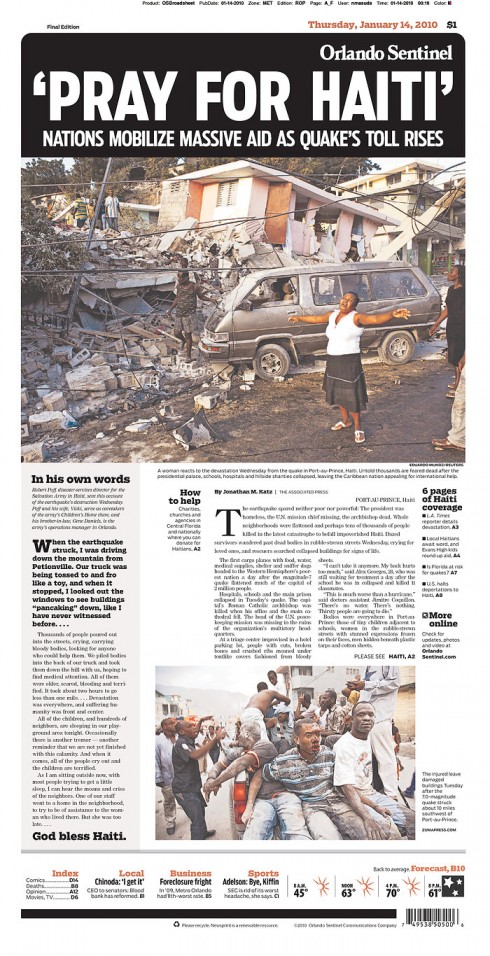
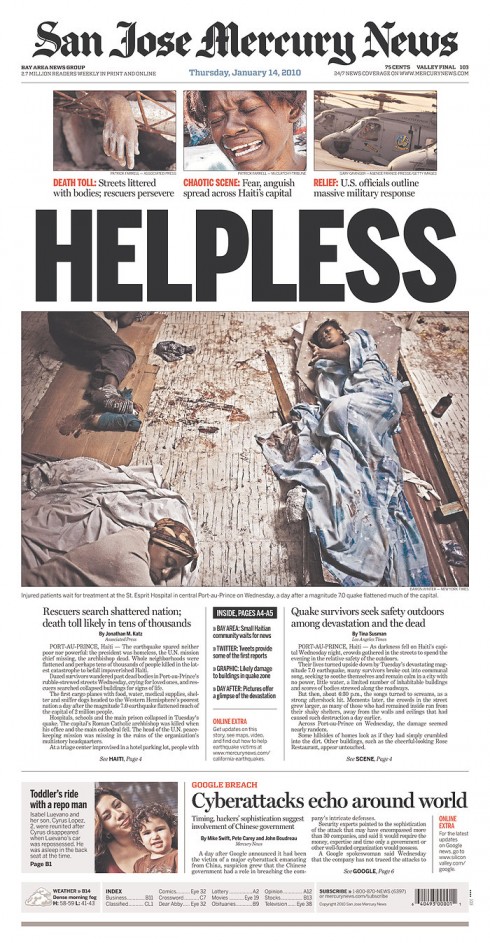
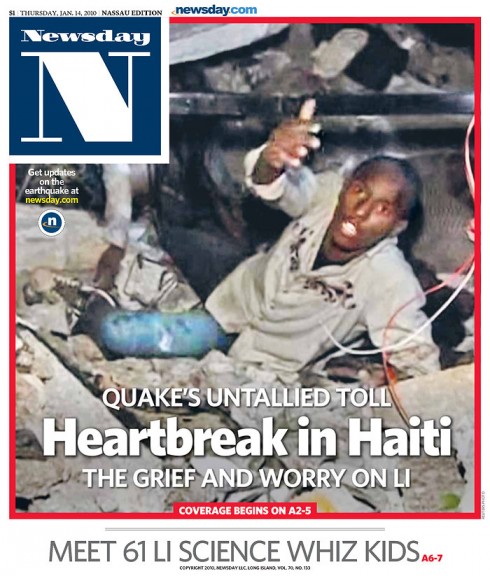
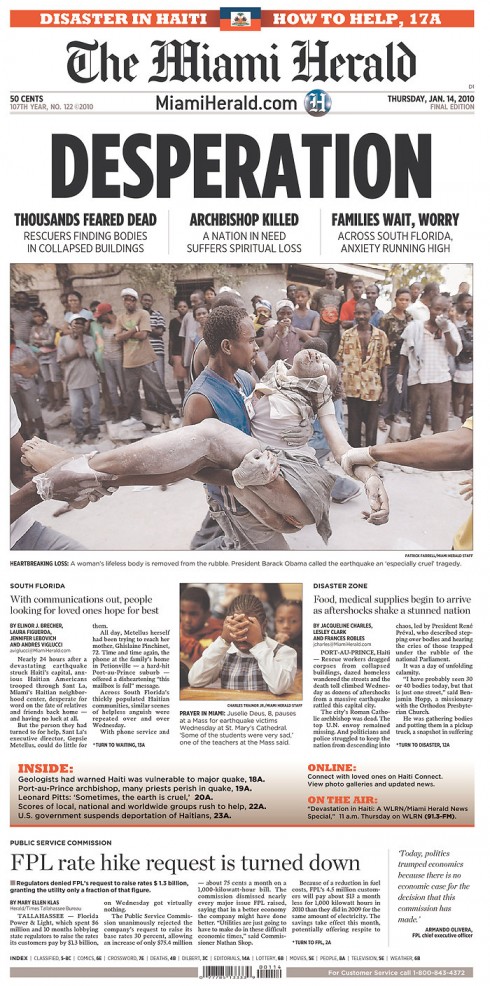

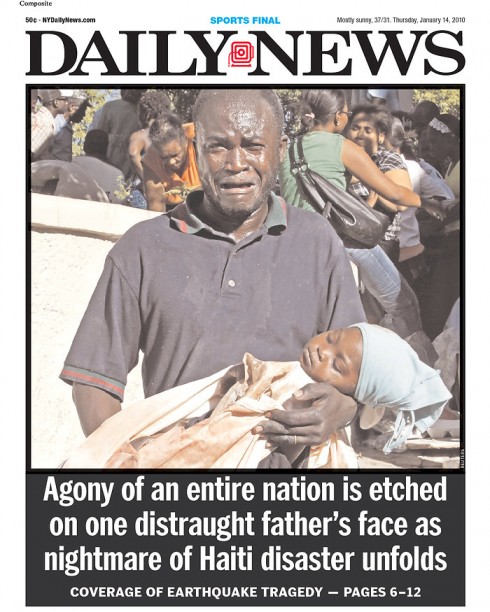
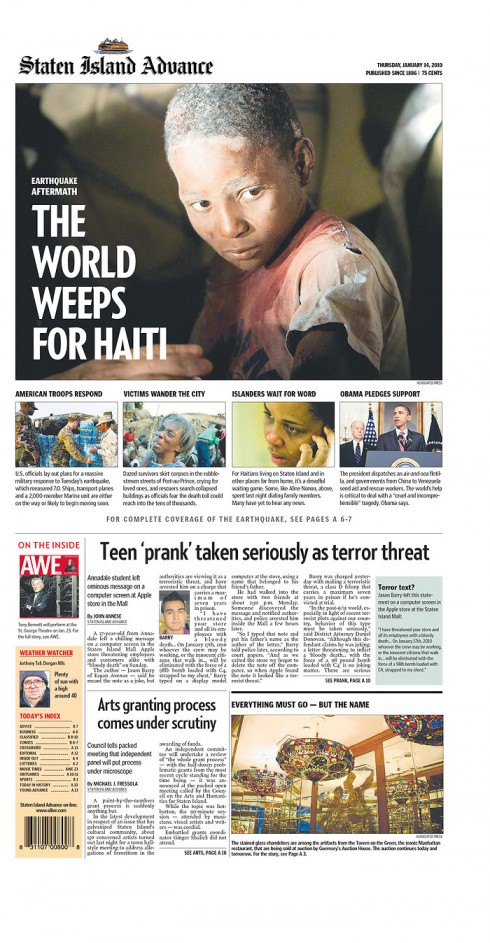
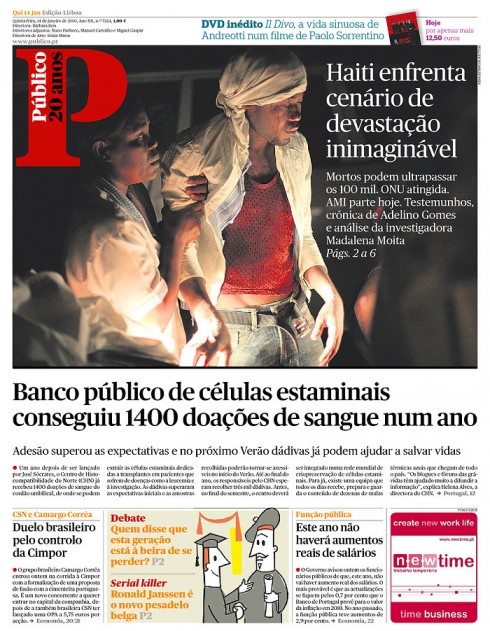

Assorted front pages showing the terror and devastation caused by the earthquake in Haiti

From Rio de Janeiro’s EXTRA
The robust earthquake that shook Haiti Tuesday is front page news for newspapers worldwide.
I lead you to The New York Times where the topic is Haiti, and the photos are from a marvelous collection by one of the most talented photographers of her generation, Maggie Steber, former photo editor of The Miami Herald, and a dear friend and colleague.
Here is a quote from her book about Haiti “Dancing on Fire: Photographs from Haiti” (Aperture: 1992)
Haiti is dreamlike, magical, evil, heavenly. It seems as though the fates pointed to Haiti and decided this is where they would put the portal between paradise and hell. Everything — everything — is one or the other. Nothing, not one part of life, lies in between. It is a life of extremes. Yet one cannot leave it alone.
http://lens.blogs.nytimes.com/2010/01/13/showcase-109/
President Clinton’s Haiti appeal:
Help provide immediate relief and long-term support to earthquake survivors by making a donation today:
www.clintonfoundation.org/haitirelief
TheMarioBlog post # 451